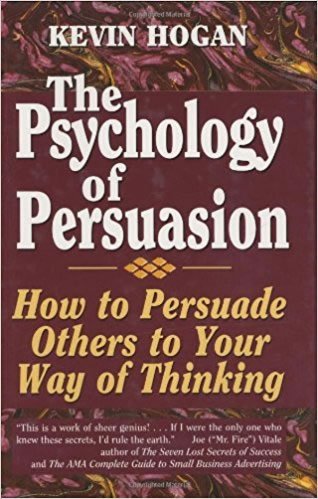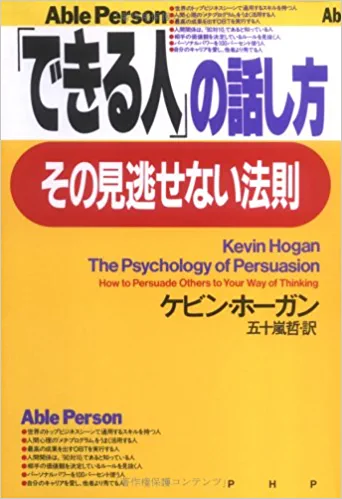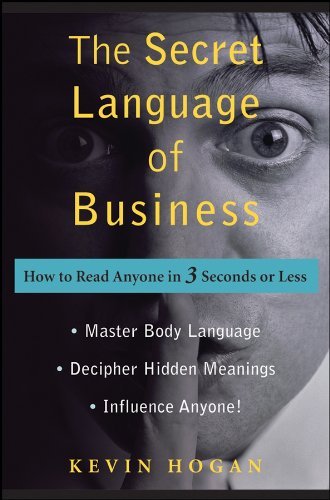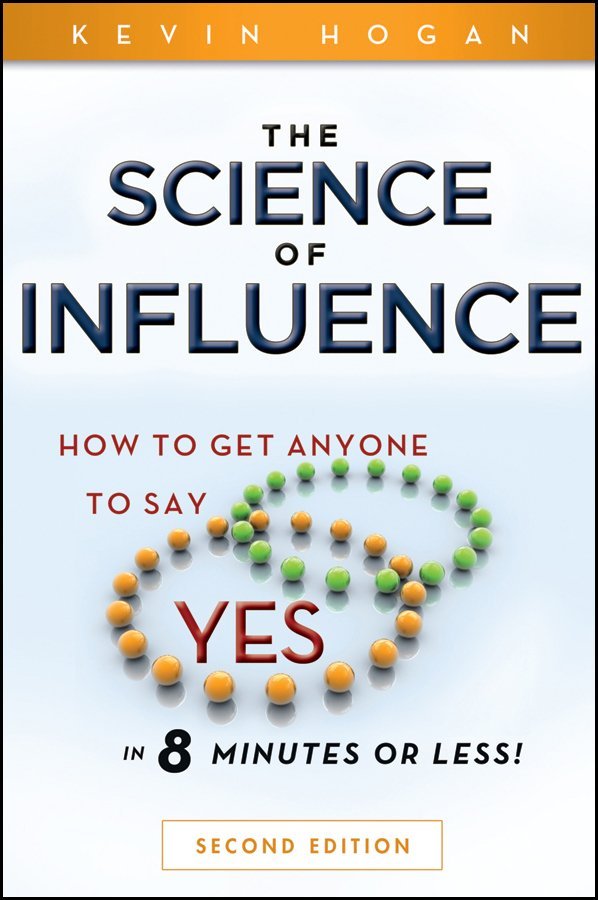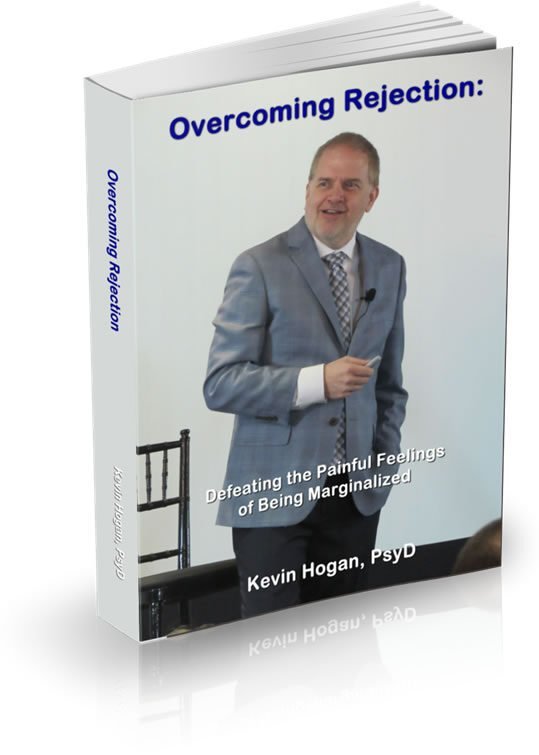There are some kinds of situations where/when people are very difficult to persuade.
The Difficult to Persuade
However, there is a group of people who is the most difficult to change their behavior and persuasion is mostly resisted.
Who?
Legend Point: The person who could become addicted to a product, when told not to use that product, actually polarize and not only tend to buy the product, but use it, defend it, and evangelize it to others.

“You will not do that in my house!”
“I don’t want you watching that on your iPad.”
“I don’t want you listening to that kind of music.”
“You are not going to go to that concert?”
“You will not get your ears pierced.”
And then assuming they would like to use the product, streaming service, whatever, they will a) rebel against your anti-X message and then they will b) Perform the behavior more often and then they will c) tell others about how cool it is.
You tell them don’t buy it and they buy it.
Again, who is this person?
They are the person who hears this…

…on the next page…
- “Don’t you go to that cult…” (The church down the street from yours.)
- “Don’t look at that word on the page…”
- “Don’t do that behavior….”
- “Don’t….”
Recent research breaks it all down to a very specific situation and how you can know what the person will do. Here it is…
The Anti-Sell
Some anti-smoking ads are simply ineffective, while others actually make youth more likely to light up. Fortunately, some are successful, and a University of Georgia study helps explain why.
Researchers found that anti-smoking ads are most effective when they convince youth that their friends are listening to the ads. Otherwise, the ads appear to stimulate the rebellious and curious nature of youth, making them more interested in smoking.
Hye-Jin Paek, assistant professor at the UGA Grady College of Journalism and Mass Communication, found that anti-smoking ads are most effective when they convince youth that their friends are listening to the ads. Otherwise, the ads appear to stimulate the rebellious and curious nature of youth, making them more interested in smoking. Paek and co-author Albert Gunther from the University of Wisconsin-Madison examined data from surveys of nearly 1,700 middle school students, and their results appear in the August issue of the Journal Communication Research.

“Anti-smoking ads have the greatest impact on smoking attitudes and behavior when adolescents think that their peers are listening to those messages,” Paek said. “And that makes sense because people are more likely to listen to what their close peers say rather than what the media says.”
Evidence that anti-smoking ads have the potential to make youth more likely to smoke has been accumulating for more than a decade. Paek and Gunther’s study adds to that evidence and helps explain how anti-smoking ads can be effective.
How?
The researchers surveyed students in four middle schools about their exposure to anti-smoking ads and their intentions to smoke. They found that, overall, the more the students were exposed to ANTI-smoking messages, the more INCLINED they were to smoke.
The exception — where exposure to anti-smoking ads correlated with a reduced intention to smoke — occurred among students who said their friends were influenced by anti-smoking messages.
“Perception is sometimes more powerful than actual behavior,” Paek said. “What we’ve found is that it doesn’t necessarily matter how your friends respond to the ads, but how you think your friends are responding.”

You’re going to reference a NORMAL, standard, every day behavior and assign it to their rolodex. Here’s how.
Paek said many health campaigns assume that anti-smoking messages have a simple, direct and strong impact on individuals. She said that by understanding the indirect route that messages often take, health communicators can design more effective ads.
Her results suggest that campaigns don’t work by convincing individuals to avoid tobacco, but rather by helping change the social norms surrounding smoking. With that in mind, she said, campaigns should be designed for a sustained, multi-year effort.
The way the message is designed is critically important, too. Rather than using an authoritarian approach along the lines of “just say no,” Paek urges health communicators to emphasize that most youth don’t smoke, and for good reasons.
“Advertising professionals have only recently become involved in anti-smoking campaigns,” she said. “We need to develop more sophisticated appeals.”
Legend Point – For any product or service, appeal to a perception of a NORM within their shared identity group and you create in your ad/message and they will comply.
Here are three fascinating pieces of persuasion research you can use starting today.
Apply all three and you’ll watch your wallet get bigger; and the relationships you want – happen in the first place – and get better in the second….
Very little matters more in getting what you want or need from an encounter than HOW YOU BEGIN & knowing what happened before you arrived.
Every conversation is “a persuasive conversation.”
There are no “neutral conversations.”

I know you’ve heard this for 20 years from me, but there is new data worth taking a peek at….
And once you figure that out, it becomes obvious just how important the much talked about “REAL first impression” really is.
The relationship between a teacher and class is important for the learning achievement of pupils and their pleasure in learning.
Dutch researcher Tim Mainhard discovered that these teacher-class relationships are very stable over the course of a school year. Consequently if teachers get off to a bad start, it is almost impossible to put things right.
During four studies in high school classes, Mainhard observed students and asked them to complete questionnaires under different circumstances and at different times.
If relationships actually did change, then the relationship over the course of a school year was more likely to became worse.
This is particularly the case for classes that start the school year with a teacher who exerts little influence on what happens in the class and whose ‘proximity’ in the class is relatively low. In such cases, the quality of the relationship gradually decreases even further.
Legend Point: Be intentionally influencing (NOT CLOSING) from MOMENT ONE.
The next page you’ll see whether relationships get worse or better over time in general.
Relationships are more likely to deteriorate than improve in time.

The research revealed that characteristics such as being strict or friendly were appreciated equally by pupils who experienced the teacher for the first time and pupils who had known the teacher longer.
This suggests that the teacher-class relationship is established almost immediately during the initial contact. Therefore the most important implication from this study is that it is probably very difficult for a teacher to fundamentally change a disrupted relationship.
And that is a real cause for dismay because a disrupted relationship does not benefit the learning outcomes of students. If the teacher has a good relationship with the pupils, then their interest for the subject taught is greater, and if the teacher exerts a large influence on what happens in class, the students learn more.
Therefore trainee teachers who do not have good contact with a class would probably be better off teaching other classes, rather than trying to improve the relationship in a class where things are not going well.
Bring that concept into your world.
If you don’t have good connections with people at work or early in a relationship, your odds might be significantly better going elsewhere.
Teaching other classes will increase the chance of trainee teachers learning to enlarge their behavioral repertoire.
OUCH!
You can’t go back home.
You can’t make it up later.
This brings up a critical question…
How soon can you tell if “it” is going to work?

I led the first speed dating events ever done here in Minneapolis. I did a number of them before bringing the idea to Seattle, California, New Mexico, etc.. In fact we were the second group to ever hold speed dating sessions in the United States! And of course, I kept score.
We had women stay seated while the men would basically play musical chairs every 5 minutes. At the end of the 5 minutes both the man and the woman would simply right “yes” or “no” as to whether or not they’d like a “real world” date with that person.
We also interviewed most of the people after the experience to see how long it took before they KNEW they wanted to see this person again and if they could see themselves in a relationship with them.
People knew almost instantly. There were no “maybe” responses by attendees. “The first minute.” “Right away.” “Maybe two minutes.” “
There was no difference between seeing the other person as being someone they wanted to be in a relationship with vs. someone they wanted to date “again,” in real life.
That’s the real world.
Scary Legend Point: Relationships almost never evolve from small seeds. They are either there instantly or they are not.
The results of almost all the research?
There are the first four minutes and then everything else is simply a way to screw up what happened at the beginning.
The goal of persuasion is to gain agreement and/or compliance or to engage in a transaction of some kind.
[Funded by the Programme Council for Educational Research, part of NWO. Poor Start Between A Class And Its Teacher Almost Impossible To Rectify.]
The same, of course, is true in almost all relationships.
The first seconds, minutes, hours, days, of a relationship at any level (business, personal, mentoring, love, et al.) are absolutely crucial.
One set of studies revealed that students who aren’t taking a professors class but see the professor on video for 90 seconds, will be able to determine whether or not the class will like the professor at the end of the semester.
That’s how fast people know.
The first 90 seconds determines the rest of the 4 months with the professor.
NOW YOU think in terms of ANY idea you propose, or the first 90 seconds with a date, or an interview, a sales call.
The results of those observing video match those taking the class and REPORTING their experience 4 months later.

The research is abundantly clear. If you blow it and can’t fix it, get over it and get on with it.
Here’s what you do…on the next page…
And there are no ideal “lines” for first impressions or relationships. In some ways life is like a play. In others it’s not. Life isn’t tightly scripted so “lines” don’t work. Frameworks do, but not lines.
In general, tricks are for kids.
Waaaaaaaaaaay more important than lines are the less often utilized factors of persuasion…most often things that no one knows about that will make a difference between “yes” and “no.”
An example:
You got a web site up/ a Facebook Group/similar, and you want it to make money.
You read a book, got a video program, whatever, that says your headline should be in red and that your opt in box should be on the right side of the page.
Two good suggestions.
But those suggestions are like “words.”
They help… a little… but you want to think of “yes” this way:

What if every web site you went to looked the same? They all had headlines in red and an opt in box on the right side….
THEN the person who had a blue headline would end up rich…because SURPRISE is waaaaaaaaaaaaaaay more important than the most successful color from Christmas past.
Here’s another way to think of it all….
You go into retail store after retail store and because ALL of the retail stores wised up and started taking the best sales trainings, they all use the same words, approach and “closing script.”
EVERYWHERE you go, everyone uses the same words, they say the same things. It’s like Ground Hog Day all over again….
The sameness quickly kills sales for everyone.
That’s part of why “retail sales growth” of any significance is rare. Companies could grow but they tend to play it “safe” and stick to the script. When covid hit these companies started to die very quickly.
Here’s what you do.
A while ago, one of my favorite Internet Marketers put an email out with a catchy Subject Line and indicated inside that in tests that he got the best open rate with this Subject Line.
Later that week I got dozens of emails from other Internet Marketers using the same Subject Lines in their emails. As you can guess knowing what you know now, they all became disappointed.
When it comes to something so specific, it’s the FIRST, INSTANT experience that will (or can) “work.” The 2nd, 21st and 88th repeats are impotent.
Copy what the guy who is rich does and you will go broke because you are meeting him AFTER he got rich.
Of all the mistakes I observe in the realm of influence and personal growth, it is this one that catches people by surprise. With rare exception, you can’t copy anything and be successful for long, if at all.
For the moment, simply remember, that subject line is 100% context dependent.
What does THAT MEAN?
If I used that same subject line for Coffee THIS week AND next week AND EVERY WEEK BECAUSE it was the most opened subject line of the year…it would cease to cause the opening.
You would stop opening it.
I would.
Everyone would.
It becomes boring, uninteresting. What was provocative and surprising, got opened…a lot. Replicate the same provocative thing over and over again and it fails.
It’s that simple.
So when people teach you what they think are “persuasive sentences” or words WITHOUT the THEORY as to WHY the sentences or words cause action and behavior, then the person is destined to fail. They simply have seven words and don’t understand the mechanics of what causes it to be effective so it can be replicated over and over again.
Try it yourself in your own sales or at the gym.
Try saying the word “because” over and over and over in a conversation assuming that …because it’s a word that has behavioral cause/effect implications, that the word will “work” 50 or 100 times in a conversation.
It won’t.
The person who fails with influence sets out to copy someone else’s transcript and they must fail.
I remember when I was seriously studying Milton Erickson’s work about 25 years ago. I was watching others around me using transcripts and then they were repeating the words and sentences he used. They didn’t grasp what influences. You can’t have a Milton Erickson swipe file. People think they just want to know the script and NOT the theory and that’s the exact opposite of what will cause that person to be successful.
Try saying the same ridiculous line to get the girl at the pub to pay attention to you that everyone else learned. The girl knows you are nothing but a knock off and you disappear instantly from her radar screen.
On the next page I’ll show you some research findings that will make you wonder if they are even real.

In virtually all stores, consumers view products on display fixtures that are presumed to be of little consequence. Yet, suppose that you were shopping for a set of cool new coffee cups and noticed some on a nearby table or shelf.
Would your evaluation of just how trendy the mugs are change depending on the display fixture’s surface material – the piece of glass or wood beneath the product?
According to the always fascinating University of Minnesota researcher Joan Meyers-Levy, there is reason to believe so.
This new research was completed by the same duo who investigated the effects of ceiling height (!) on people’s actions.
They found that, among other things, high ceilings cause people to think of the big picture vs. low ceilings that cause people to think about the details…so if I own a casino, I want the highest ceilings possible to keep the players’ minds off the details and on the ambiance.
Meyers-Levy and her partner explored how a consumer’s self-view and the display surface a product rests on can interact to affect perception.
In research in the Journal of Marketing Research, Meyers-Levy, a marketing professor at the Carlson School of Management, and co-author Rui (Juliet) Zhu of the University of British Columbia use lab and field experiments to demonstrate this effect.
Meyers-Levy offers an example to illustrate her argument.
“Imagine you are at work. All day you have been collaborating on a team project, focusing on a team goal. This experience puts you in an inter-dependent mindset – you have a more global view of the world, where things you encounter are viewed as interconnected. If you go shopping at lunch, this self-view will affect your perceptions of products.”
She continues, “If a product is part of the display, then the perceptions the consumer has of the fixture become part of their perception of the product.”
How exactly do context and environment matter in YOUR persuasion?
Think about this for a moment. It’s a simple example of “context.”
My son came down one night, taking a break from studying and invited me to a game of chess. He had been learning how to play guitar. This is take two after a multi-year hiatus. Learning guitar is difficult and everyone is a beginner on day one.
My son and I are pretty evenly matched in chess.
But he was in “learning/rookie” mode for the prior two hours.
We played our first two games and he was crushed by his Dad. As he returned to Master Mode, he then crushed his Dad 4 consecutive games at which point I went back to writing Coffee that night.
He was playing chess on a “rookie” level because that was the context his brain was in. But only for a short time.
Knowing what a person JUST DID helps you know how they will behave RIGHT NOW because it takes a LITTLE TIME for the brain to COMPLETELY shift contexts.
If the consumer thinks that wood is ‘earthy’, then a product – a mug, a shoe, a watch, food – displayed on a wood table will seem more natural or traditional.
If a product is on a glass table, an inter-dependent minded consumer would think of the very same product as more hip and modern, assuming they think of glass as hip and modern.”
Cool?
A. The context changes the perception of the bread or the cup. B. The consumers self perceptions interact with the product AND context causing a specific evaluation that will cause purchase or no-purchase. What’s fascinating is that people don’t think about their own self view very often.
Think about the Holidays.
Maybe you were at the relatives or they were at your place. Maybe everyone was not only on their best behavior…at least until you started talking about politics…but everyone was sort of in that “family mode.”
In “family mode” a person often starts acting like they did as a kid with this group of older or younger siblings.
Speaking styles change. Thinking styles shift dramatically.
That’s an example of how you…your Self changes on the spot.
The context and the environment are monster-sized factors in changing and predicting behavior.
Leaving family mode and returning back to an “office mode”…
…If someone had been working all day in a setting where they were competing with others for a promotion, they would be thinking more about themselves as a separate distinctive person who is unlike others; their mindset will be independent.
In this case, that person as the shopper at lunch would ascribe characteristics to the product that are opposite of those associated with the display surface. Thus, they would regard the mug, shoe, or watch as hip and modern when it is displayed on a wood table, but natural or traditional on a glass table.
This is one of the big reasons people say “no” to other people. They don’t know how people are evaluating themselves in the moment. It seems like mind reading would be required.
That is correct.
Many brands are positioned on dimensions such as trendy (e.g., Diesel), traditional (e.g., L.L. Bean), or all-natural (e.g., Aveda). Meyers-Levy’s findings indicate that display surfaces or merchandising can either bolster or damage such product perceptions. For retailers, this insight can also help in choosing displays that offer continuity with their brands.
“Retailers cannot directly control shoppers’ perceptions of their goods, but they can anticipate or manipulate the kind of cognition – self-view – their target consumer uses,” says Meyers-Levy. To some degree, this could be accomplished by considering customers’ demographic profiles, but marketers could also try to actively shape shoppers’ mindsets.
 Meyers-Levy demonstrated that simply putting up posters that encouraged shoppers to adopt an independent or an inter-dependent self-view had this effect, thereby influencing their perceptions of products displayed on different table top surfaces.
Meyers-Levy demonstrated that simply putting up posters that encouraged shoppers to adopt an independent or an inter-dependent self-view had this effect, thereby influencing their perceptions of products displayed on different table top surfaces.
For consumers, these findings offer an opportunity to be savvy. “If a shopper is aware of the tools used to enhance brand reputation or sales,” says Meyers-Levy, “they will be much more likely to make an informed decision, rather than going home with the wrong product.”
That’s a pretty excellent strategy for the moment.
What other instant “take-aways” you can use now?
The first take away is that people have a number of different “selves.” In other words, most people are…different people…in different places. They think differently and act differently. In fact, most people exhibit different personality traits in different settings.
The second is that when someone is in a specific “valence” or “self,” they interact with the world differently than when they are in a different valence.
Got it?
Back to the store….
Consumers who stand on carpeted flooring feel comforted, but they judge products close to them to be less comforting, according to a study in the Journal of Consumer Research.
 In the study, authors Joan Meyers Levy (University of Minnesota, Minneapolis), Rui (Juliet) Zhu, and Lan Jiang (both University of British Columbia) explored the feelings evoked by the two most common flooring types in retail environments: hard vinyl tile and carpet.
In the study, authors Joan Meyers Levy (University of Minnesota, Minneapolis), Rui (Juliet) Zhu, and Lan Jiang (both University of British Columbia) explored the feelings evoked by the two most common flooring types in retail environments: hard vinyl tile and carpet.
“We first conducted a study to show that carpeting flooring indeed evokes a greater sense of physical comfort than tiled flooring,” the authors explain.
“Based on this finding, we addressed a more practical and intriguing question: would these bodily sensations elicited by the flooring transfer to people’s assessments of products that they observe while shopping?”
The researchers had participants stand on either soft pile carpet or hard tile and view objects that were either close or moderately far away.

When products were extremely far away, individuals’ product judgments were no longer influenced by their bodily sensations.
That’s called “Psychological Distancing.” It’s a pretty important element in influence that no one wants to teach you about because it is easily misused and abused.
People who examined items while standing on a plush carpet judged products that were close as being ***less*** comforting than products that were moderately far away.
“The bodily sensations elicited by the flooring are more likely to be used as a comparison standard, not an interpretive frame,” the authors explain.
The most important elements in influence are the contextual elements. The ceiling and the carpeting cause DRAMATIC SHIFTS in people’s decision making.
In contrast, when items were placed moderately far away, their bodily sensations unconsciously guided their product interpretations.
Is this a life changing take home for you? Read carefully. Participants perceived the more distant products as comforting when they stood on carpet.
 In a final study, consumers could more easily make out the contents of a gift basket from a moderate distance than from a close one.
In a final study, consumers could more easily make out the contents of a gift basket from a moderate distance than from a close one.
“Interestingly, the results reversed in this case. When viewed from a moderate distance, the gift basket was judged as more comforting when individuals stood on the hard tile floor rather than the carpeted floor.
These results further supported our premise that it is the viewing clarity that ultimately determines the direction of the influence of flooring-induced bodily sensations,” the authors conclude.
People in the United States, Canada, The UK, Australia, tend to see themselves as individuals. (It’s hard for me to think of …me…in any other way.) But the research shows that in lots of other parts of the world, particularly in Asia, people think of themselves as PART of a greater WHOLE.
Because you and I have been raised to be more individualistic, we seen things through that “filter.” But the fact is, if you want to really get influence, if you want to understand persuasion, you absolutely want to try on the world and look through the filters of other people.
This is one of the most difficult thing for people to do and yet it separates the smart persuader from the guy who said all the right words.


